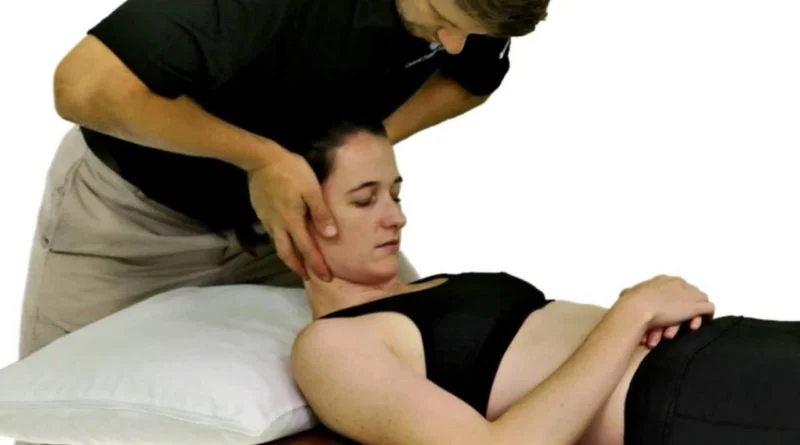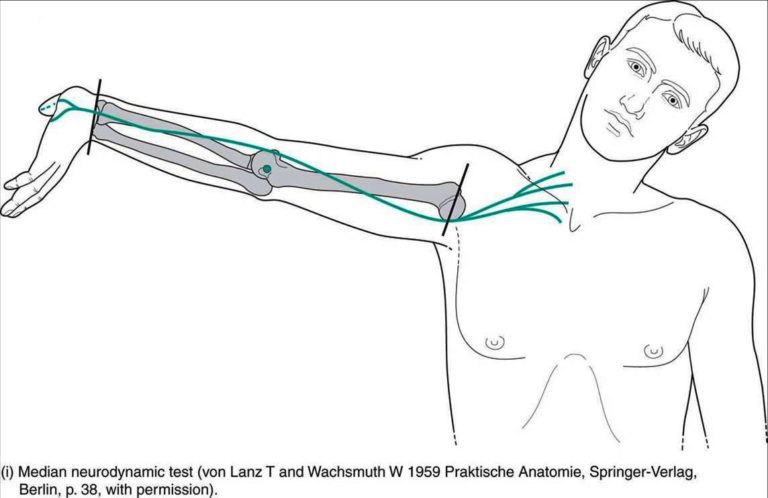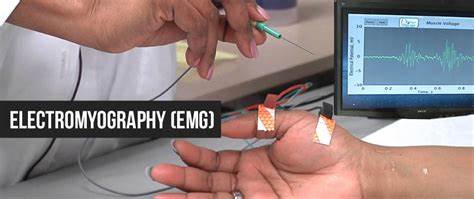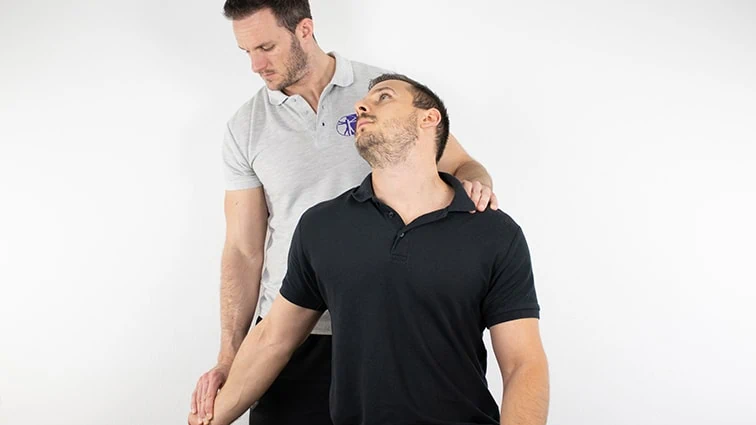Cervical Flexion-Rotation Test(CFRT):
Table of Contents
Description
The cervical flexion-rotation test(CFRT) is a form of manual examination test that helps in the diagnosis of neck pain-related conditions.
It is an easily applied clinical test for dysfunction C1-C2 cervical spine.
The cervical spine movement at the C1-C2 level is for nearly 50% of the rotation of the cervical spine.
The sensitivity of the cervical flexion-rotation test(CFRT) is high & specificity is found in the presence /absence of cervical joint dysfunction for neck pain & headache patients. So that these tests are involved a high degree of skill on the part of the examiner & reliability of this is questioned.
In this cfrt performance, bending the head forward towards the test is an attempt to the state of being alone in the movement of the C1-C2 of the cervical spine, which is unique for the ability to rotate the head forward towards the test. The normal range of rotation movement = range of motion in the end range of bending motion is shown to be forty-four degrees from each side. when compared to others, the patient suffered from headaches with a spine of C1-C2 disorder for a mean of seventeen degrees in less rotation.
It is closely related that several years do not importantly affect movement at the time of the cervical flexion rotation test(CFRT). One Clarification of this test of the upper cervical spine is going to the minimal number of years backward change and in comparison to any other joint which is lower in the cervical spine.
Furthermore, several living factors do not include the factors of the different positions like a sleeping position or a sitting position.
What is the Importance of the cervical flexion rotation test(CFRT)?
- Position of patient – supine position
- Physiotherapist sits or stands at the head of the patient & flexes the cervical spine fully.
- When the patient holds this flexion position, the physical therapist then rotates the head on both the left and right sides.
- Normal rotation in the flexed position should be about forty-five degrees each way.
- Maintaining this flexed position is more likely to isolate the rotation to the C1 -C2 area so that C1 -C2 disorder may be evident if the rotation is decreased means that hypo-mobility or increase means that hyper-mobility than normal.
Cervical Flexion-Rotation Test Video:
What is the information on the cervical flexion rotation test(CFRT )?
The cervical flexion rotation test is shown quality of sensitivity, accurate diagnosis purpose & specificity of the cervical flexion rotation test is very high ninety percent and eighty-eight percent with ninety-two percent agreement for the experienced therapist P<.001.
Furthermore, although the inexperienced examiners reported a greater range for the Cervical Flexion-Rotation Test(CFRT) than the experienced examiners, sensitivity, specificity & agreement are still within the clinically acceptable levels. The Cervical Flexion-Rotation Test(CFRT) is a useful clinical measure in cervical movement impairment & it assists in the differential diagnosis of Cervicogenic Headache.
Good levels of inter & intra-observer reliability are established by Takasaki et al. Comparing the manual test outcome with the MRI measurement of cervical segment rotation. ICCs are greater than 0.7 with narrow 95% confidence interval values for a mean range of rotation(ROM).
These data lend support to the content validity of the Cervical Flexion-Rotation Test(CFRT ) as a clinical test of atlantoaxial mobility. It is important to recognize the Cervical Flexion-Rotation Test(CFRT). It is a relatively isolated test of the movement impairment of the C1-C2 motion segment & may not adequately test the other motion segments.
Differential diagnosis of the cervical flexion-rotation test(CFRT)?
Recently, it is shown that the impairment of cervical movement is associated with palpable upper cervical joint dysfunction & impairment in the craniocervical muscle control.
In a sensitivity of = 100% & a specificity of = 94% to identify Cervicogenic Headache from the Migraine.
This is clinically important since for example physiotherapy is found to be effective for Cervicogenic Headache CGH but not for migraine.
The range is most restricted in the subjects with the CGH = 25° significantly more important impairment than either group’s Migraine (42′ or Multiple Headache forms to MHF = 35°)
It appears that the presence of the aura is a minimal effect on the range of motion during the Cervical Flexion-Rotation Test(CFRT).
As stated previously, the Cervical Flexion-Rotation Test(CFRT) is shown negatively in the subjects with the CGH where the pain arises from cervical levels other than C1-C2 of the cervical spine.
Pett man’s distraction test:
- This test is used for the tectorial membrane.
- position of the patient: lies with the head in a neutral position.
- The therapist applies gentle traction on the head.
- if no symptoms are produced, the patient’s head is lifted forward, flexing the spine & traction is applied again.
- If the patient complains of any symptoms, like pain or paresthesia in this position, then the test is considered positive for a lax tectorial membrane.
FAQ
What is countable: May be utilized as a diagnostic test to evaluate whether cervicogenic headache is because of upper cervical disorder versus disorder at other levels of the cervical spine.
The reported normal range of rotation at the time of the FRT is 44° to each side and is positive if mobility is restricted by more than 10° or if symptoms happen at the time of the procedure. FRT with a digital goniometer. FRT, flexion-rotation test.
The full flexion-internal rotation test is helpful for checking the magnitude of a labral tear in the posterosuperior part of the acetabular labrum in dysplastic hips.
The correctness of the flexion-rotation test varies in the middle of 70% and 91.3% sensitivity and 85% and 91.4% specificity in people with cervicogenic headaches.
Rotation to right is restricted by the left alar ligament and vice-versa. Damage of Alar ligaments by trauma or inflammatory disease may result in improved axial rotation in the middle of the occiput and atlas and atlas and axis.






